Disclosure: We may earn commissions if you purchase products after clicking on a link from our site.
Do you want to hunt mountain goats? Would you like to learn how to hunt mountain goats? Mountain goat hunts are one of the most dangerous forms of big game hunting. They reside in rugged terrain, cliffs, and along knife-edge ridgelines. In this article, we discuss some major points to increase your chances of a successful mountain goat hunt.
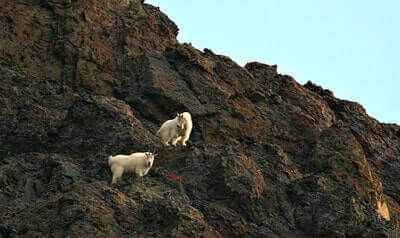
How To Hunt Mountain Goats
1. Scouting
Scouting mountain goats is a crucial step in preparing for a successful hunt in mountain goat habitat. It is usually rugged and often inaccessible terrain with mountain ranges, high elevation, and high altitudes. Mountain goats inhabit steep, rocky cliffs and alpine environments, making them challenging to locate and approach.
Scouting involves studying maps, topography, and habitat preferences to identify potential goat habitats. Hiking and glassing high vantage points allow hunters to survey large areas and search for signs of goat activity, such as tracks, droppings, or hair caught on bushes.
Understanding their feeding patterns, preferred bedding areas, and travel routes can help hunters narrow down potential hunting spots. Additionally, scouting helps hunters familiarize themselves with the terrain, plan their approach routes, and assess potential obstacles or hazards, ensuring a safer and more successful hunt.
When you scout an area for mountain goats, you want to keep an eye out for tracks, scat and shed wool that can be found on shrubs near trails and bedding areas. Since they are often found around steep cliffs and knife-edge ridgelines, it can be easy to spot them. A spotting scope is often used by a mountain hunter when on mountain goat hunts.
2. Tough Hunt
Hunting mountain goats is physically and mentally challenging. There is an old saying that “Mountain goat country begins where sheep country ends”. They live in rugged terrains that are far away from the reach of vehicles and pack animals. To get to them, you have to work the rough and dangerous terrain only on foot. There are times when you will have to sleep on the mountains in wet, cold, and often icy conditions.
Hunting mountain goats is physically imposing and you have to be in good physical condition. Many mountain goat hunters die from slips, falls, hypothermia, and exposure. You will hunt better if you put some time into your physical conditioning. If you want to learn how to hunt mountain goats, then your physical fitness is important.
3. Hire An Outfitter
When considering hunting mountain goats, hiring an outfitter for a guided hunt can be a valuable option for both novice and experienced hunters alike. Mountain goat hunting demands specialized skills, knowledge of the terrain, and physical endurance due to the challenging mountainous environments where these animals reside.
Outfitters offer expertise in locating prime hunting areas, navigating rugged terrain, and ensuring a safe and successful hunt. They provide logistical support, including transportation, equipment, and accommodation, allowing hunters to focus on the hunt itself.
Additionally, outfitters often have access to exclusive hunting areas and possess valuable insights into goat behavior and habits, increasing the likelihood of a memorable and rewarding hunting experience. Hiring an outfitter can streamline the hunting process, enhance safety, and maximize the chances of harvesting a trophy mountain goat.
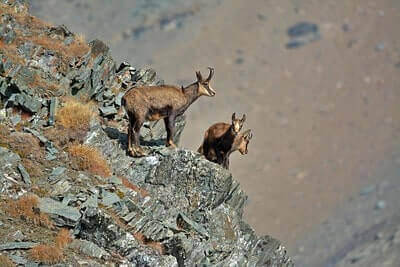
4. Spot & Stalk
The spot and stalk hunting method is a popular approach when hunting mountain goats in their rugged habitat. This method involves patiently glassing from vantage points to locate goats from a distance, then carefully stalking within shooting range for a clean shot.
Mountain goats are known for their keen eyesight and ability to traverse steep and rocky terrain, making them challenging targets. Spotting goats from afar allows hunters to assess the herd’s composition, select a suitable target, and plan an approach route that takes advantage of natural cover and terrain features to conceal their movements.
Stalking requires patience, stealth, and careful footwork to close the distance without alerting the wary goats. Success with the spot and stalk method often depends on a hunter’s ability to blend into the surroundings, move silently, and capitalize on fleeting opportunities presented by the unpredictable mountain environment.
5. High-Quality Optics
Using high-quality optics is essential for hunting mountain goats due to the challenging terrain and the need to spot game from long distances. Mountain goat hunting often takes place in rugged, vast landscapes with varied terrain, where goats may blend seamlessly into their surroundings.
High-quality binoculars or spotting scopes enable hunters to thoroughly scan the terrain, identify potential targets, and assess trophy quality from afar. Crisp, clear optics with excellent light transmission enhance visibility in low-light conditions, such as dawn and dusk, when mountain goats are most active.
Additionally, durable and weather-resistant optics are crucial for withstanding harsh mountain conditions and ensuring reliable performance throughout the hunt. Investing in top-notch optics can significantly improve a hunter’s ability to locate, observe, and ultimately harvest mountain goats while enhancing the overall hunting experience. You can read reviews of the best hunting binoculars and best spotting scopes on the market today.
6. Gear Selection
Gear selection plays a pivotal role in learning how to hunt mountain goats effectively. Mountain goat hunting often takes place in remote, rugged terrain with unpredictable weather conditions, making proper gear selection crucial for safety, comfort, and success.
Choosing appropriate clothing, such as moisture-wicking base layers, insulating mid-layers, and weatherproof outer layers, ensures hunters stay comfortable and protected from the elements during long days in the mountains. Sturdy and supportive footwear with excellent traction is essential for navigating steep, rocky terrain safely and confidently.
Additionally, selecting lightweight yet durable equipment, including backpacks, trekking poles, and camping gear, allows hunters to move efficiently and comfortably while carrying essential supplies for extended hunts. Opting for high-quality optics, firearms, and ammunition tailored to mountain hunting conditions enhances visibility, accuracy, and shot placement.
Overall, thoughtful gear selection tailored to the demands of mountain goat hunting maximizes safety, comfort, and performance, setting hunters up for a successful and enjoyable hunting experience.
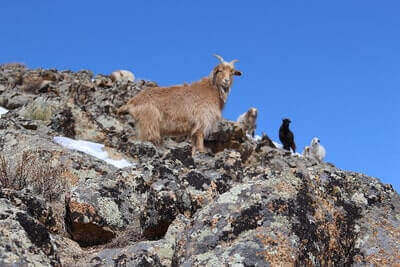
7. Mountain Goat’s Weakness
A mountain goat’s major weakness is its comfort in its habitat. Since they hang around cliffs and knife-edge ridgelines with their escape route always close by, they feel safe on the cliffs and have a high tolerance to hunting pressure. This confidence puts them inside the average rifle range most of the time.
This is a weakness that you can take advantage of when you are learning how to hunt mountain goats. They don’t expect you to come from their escape cover and if you can navigate to it undetected, the mountain goats will be very exposed and vulnerable. They will be baffled as to how you cornered them from their escape cover without them spotting you.
8. Get Above Them
Mountain goats always expect danger from below them as they move along steep cliffs and knife-edge ridgelines. They don’t expect danger to come from above them. if you can get above them without them spotting you, they tend to panic when they finally see you above them. This gives you a good opportunity to take a shot when they are in a place where they can easily be retrieved.
9. Wind Direction
Knowing the wind’s direction is paramount when hunting mountain goats as it significantly impacts the success of the hunt. Mountainous terrain often creates complex wind patterns, with gusts swirling around peaks, ridges, and valleys. Understanding the wind’s direction is crucial for several reasons.
First and foremost, mountain goats possess keen senses of smell, and any shift in wind direction can carry human scent directly to the animals, alerting them to danger and causing them to flee. Hunters must position themselves strategically, ensuring that their scent is carried away from the target area.
Moreover, wind direction affects sound transmission, with wind gusts masking the noise of a hunter’s movements or, conversely, amplifying sound and alerting nearby animals. By constantly monitoring wind direction and adjusting their approach accordingly, hunters can minimize their scent signature, reduce the likelihood of detection, and increase their chances of a successful mountain goat hunt.
Mountain Goat Hunting Tips
1. Mountain goats live in areas beyond the reach of vehicles and pack animals.
2. When planning a mountain goat hunt, allocate adequate time for the hunt.
3. When scouting for mountain goats, look for tracks, scat, and shed wool on shrubs near trails and bedding areas. How to hunt for mountain goats involves careful and meticulous scouting.
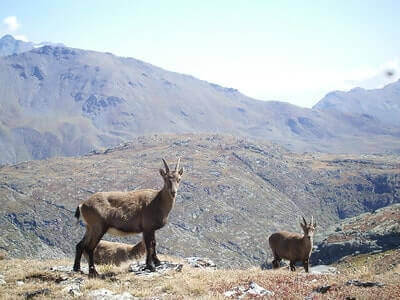
4. You can hire a guide if you don’t have a lot of experience in how to hunt mountain goats.
5. The common hunting method for mountain goats is spot and stalk.
6. Get high-quality optics to glass for mountain goats.
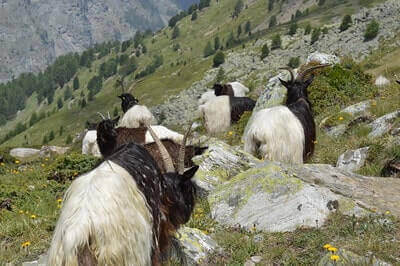
7. Retrieving a mountain goat is even more challenging than finding one and taking it down. Learning how to hunt mountain goats is one aspect of mountain goat hunting, retrieving it is another major aspect of hunting them.
8. Mountain goats are very tough animals. If you shot it, be prepared to take another shot to drop it in its tracks. You don’t want it taking steps and falling over to a place that is very difficult to retrieve it.
9. Learn the difference between a billy and a nanny mountain goat.
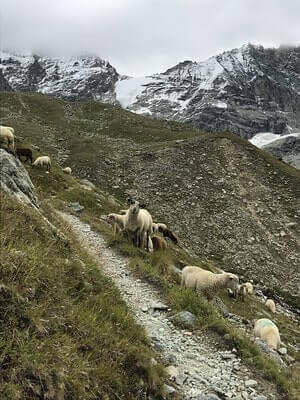
10. During the off-season, get physically fit for the mountain goat hunting season. Getting in shape will improve your chances of success. How to hunt mountain goats involves a lot of walking over steep hills, rocky slopes, and tough and dry terrain.
11. How to hunt mountain goats will not only challenge you physically, but it will also test you mentally. Be mentally prepared that mountain goat hunting is a grind.
12. The gear you choose for the hunt is just as important as being physically and mentally fit. You don’t want to be wet and cold in the middle of nowhere. It can result in a premature end of the hunt.
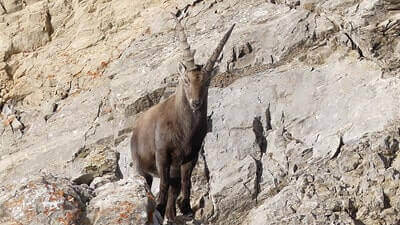
13. Mature males are often found alone or in a small group. When learning how to hunt mountain goats, remember most of the time when you spot one alone, it is most likely a mature male.
14. Mountain goats always expect danger from below. If you can get above them, they panic as they don’t ever expect you to be above them.
15. If you find travel routes, bedding, and feeding areas from scouting, be patient and wait for them as you can pattern their movements and set up ambush points or stalking routes. How to hunt mountain goats involves finding these routes and using them to surprise and ambush the goats.
16. Mountain goats have a very good sense of smell. Always work downwind of them to avoid your scent reaching them. When learning to hunt mountain goats always be aware of the direction of the wind concerning your position and where you think they are located.

The Bottom Line
Mountain goats are one of the toughest big game animals. They live in rugged terrain and often hang around steep cliffs and knife-edge ridgelines. How to hunt mountain goats is not an easy venture, it requires physical and mental toughness.
In this article, we discussed how to hunt mountain goats to increase your chances of successfully hunting mountain goats. If you are interested in hunting hogs, you can read how to hunt hogs from this link. You can also read how to hunt bison, how to hunt wild sheep, how to hunt dall sheep, how to hunt aoudad, and how to hunt hogs.